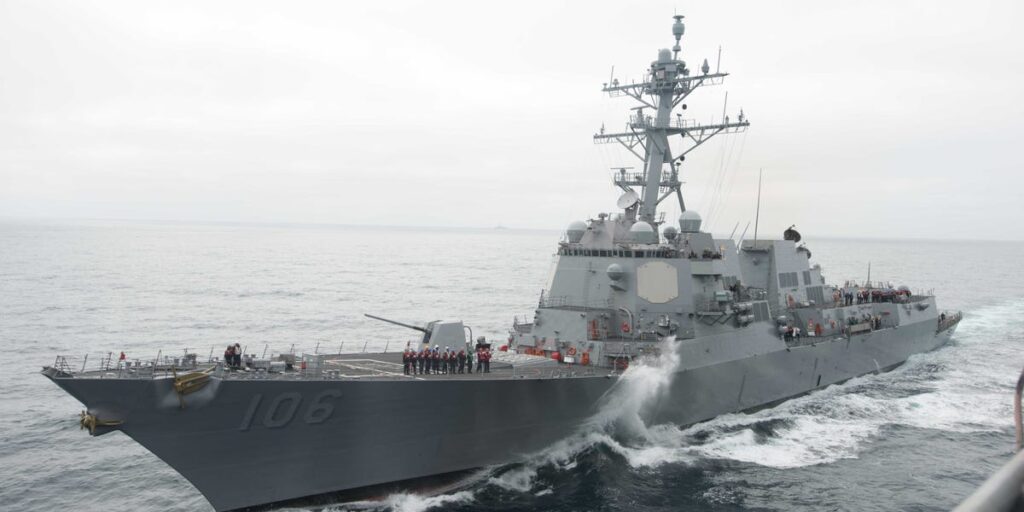An eighth US Navy vessel arrived in the Caribbean this week as part of President Donald Trump’s push to combat maritime drug trafficking and cartel activity with military force.
USS Stockdale, an Arleigh Burke-class guided-missile destroyer, joins seven other American vessels in the waters of US Southern Command. Among the deployed warships are the destroyers USS Jason Dunham and USS Gravely, USS Lake Erie, a missile cruiser, and USS Minneapolis-Saint Paul, a littoral combat ship.
Three other Navy ships — USS Iwo Jima, USS Fort Lauderdale, and USS San Antonio — comprise the Iwo Jima Amphibious Ready Group that has been routed to the region with the 22nd Marine Expeditionary Unit.
A Marine Expeditionary Unit is a US military crisis response force, and usually comprises around 5,000 Marines and sailors aboard three ships that act as regional deterrents. MEUs most often train for emergency evacuation operations, disaster response, and amphibious assaults.
The deployment moves were made by Secretary of Defense Pete Hegseth “in support of the President’s directive to dismantle Transnational Criminal Organizations, Foreign Terrorist Organizations, and counter narco-terrorism to defend the homeland,” a Navy spokesperson wrote to Business Insider in a statement.
They said that Coast Guard Law Enforcement Detachment teams are operating alongside the Navy in an increasingly tense region where the military is playing a greater role in a new war on drugs.
Trump has called for increased monitoring of oceans off the coast of Venezuela, which the president has alleged is responsible American drug-related deaths. The State Department is offering a $50 million reward for Venezuelan President Nicolás Maduro, who is believed by some officials to be the leader of a prominent drug cartel.
The Navy official said that in addition to naval vessels, the military has deployed “air assets to strengthen US whole-of-government detection, monitoring, and interdiction capabilities to sustain pressure” on transnational criminal organizations in the region. They declined to provide further details on which air assets are included and how they are being employed.
The Department of Defense has, however, indicated that F-35 Lightning II Joint Strike Fighters, advanced fifth-generation aircraft with networked capabilities and high-end sensor suites, are involved in the mission. It said last week that fighters from Marine Fighter Attack Squadron 225 are “ready to take on cartels.”
Among other aircraft, the US has also had MQ-9 Reaper drones active in the region.
On the naval vessels on patrol, the official said that they will boost “US capacity to detect, monitor, and disrupt illicit actors and activities that compromise the safety and prosperity of the United States homeland.”
These significant counter-cartel deployments come as the US military takes an increasingly powerful role in missions near the US-Mexico border and nearby waters normally left to the Department of Homeland Security or the Coast Guard, an overstep some officials worry runs counter to the laws of war.
The Trump administration designated several cartels as “foreign terrorist organizations” earlier this year, and in recent weeks, the US has struck at least three Venezuelan boats, killing almost 20 people and sparking concerns about due process.
While the terrorist designation gives law enforcement new legal tools, there are some questions as to whether it can lawfully authorize treating cartel members as enemy combatants or using military force without congressional approval.
Read the full article here


